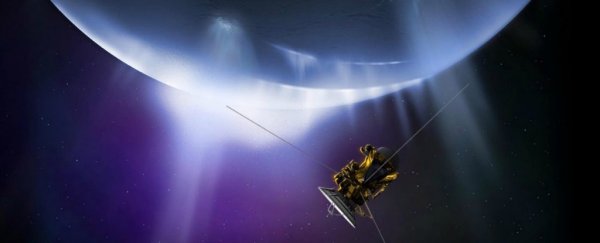With the crackle and fade of a signal beamed from 932 million miles (1.5 billion km) away, NASA's 20-year Cassini mission at Saturn has come to an end.
The bus-size Cassini probe began its descent into Saturn while streaming unprecedented real-time measurements of the planet's atmosphere. The probe ramped up its thrusters to keep its antenna dish pointed toward Earth to send the data.
However, its connection with Earth didn't last much longer: The thrusters weren't designed to keep a spacecraft righted while plunging into Saturn at 78,000 mph (125,000 km/h).
Cassini began to tumble, breaking its last bond with Earth around 9:55pm. The signal was lost. And then the probe died.
It's unlikely that anyone saw it happen - not even powerful telescopes - but NASA surmises that its "faithful traveller from Earth" heated up to hundreds and then thousands of degrees, broke apart, disintegrated, and vaporised into a small, plutonium-laced meteor that streaked above Saturn's clouds.
Before dying, Cassini's final communication travelled at light-speed from Saturn, taking just over an hour 23 minutes to pass through the void of space and reach Earth.
Giant radio dishes in Australia picked up the signal and forwarded the data to NASA's Jet Propulsion Laboratory (the heart of the Cassini mission).
Silence fell over the control room, which was full of Cassini's scientific stewards and their family members. Everyone stared at their screens. When the feed of data stopped, people clapped, then hugged, and many could be heard crying.
"The signal from the spacecraft is gone, and so will be the spacecraft in the next 45 seconds," said Earl Maize, an engineer at NASA's Jet Propulsion Laboratory who manages the Cassini mission, during a live broadcast by NASA TV.
"This has been an incredible spacecraft, an incredible mission, and you're all an incredible team."
NASA could not confirm exactly what time Cassini met its doom, though the agency estimated it happened seconds to minutes after they lost touch with the probe.
One thing is clear, though: The space agency's US$3.26-billion mission to explore Saturn is over.
"Thank you, Cassini, and farewell," Maize said during a press conference on Wednesday.
Will there be a Cassini 2.0?
Cassini is now dust falling through Saturn's clouds, and NASA has no other spacecraft there to study the planet, its rings, and fleet of moons.
But NASA is itching to fuel up more nuclear batteries, build a new spacecraft, and return to the planetary system.
"The observations by Cassini have been so remarkable for Enceladus and Titan, that … we announced the inclusion of those two objects in our focused science program called New Frontiers," Green said on Wednesday.
"Those proposals are in and currently under evaluation, and they do indeed include proposals to go back to Titan and Enceladus. We'll look through this competition and see what happens."
New Frontiers has produced missions like New Horizons, which flew by Pluto (and is on its way into the Kuiper Belt); Juno, which is currently orbiting Jupiter; and OSIRIS-REx, a probe designed to suck up bits of Asteroid Bennu in 2018 and return that sample to Earth in 2023.
Spilker wrote and submitted one of the latest New Frontiers proposals with Morgan Cable, a fellow Cassini scientist. If approved, they will get about US$800 million, nuclear power supplies, and a rocket to make their mission happen.
"We've put together a proposal … to go back to Enceladus with the kinds of instruments that you would need to address the questions about the habitability and 'is there life in the ocean of Enceladus?' The mission's called Enceladus Life Finder," Spilker told Business Insider.
She'll find out in December whether or not the proposal made the first cut, and gets a year to more deeply study and flesh out a mission plan. There are 11 competing proposals, about half of which also propose a return to Saturn.
"Certainly if my mission doesn't get selected, then I will be rooting for a mission to go back to the Saturn system," Spilker said. "Because as Cassini ends, part of me is saying 'I need to go back.'"
This article was originally published by Business Insider.
More from Business Insider:
